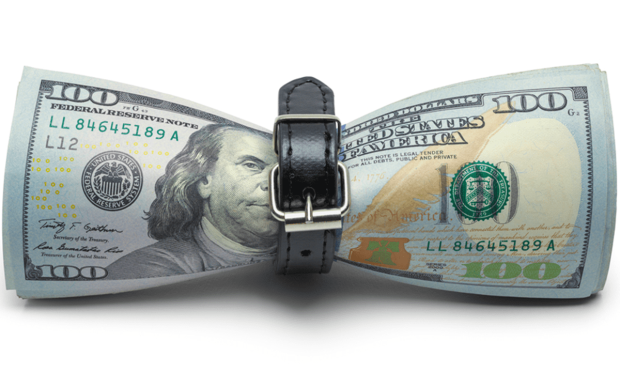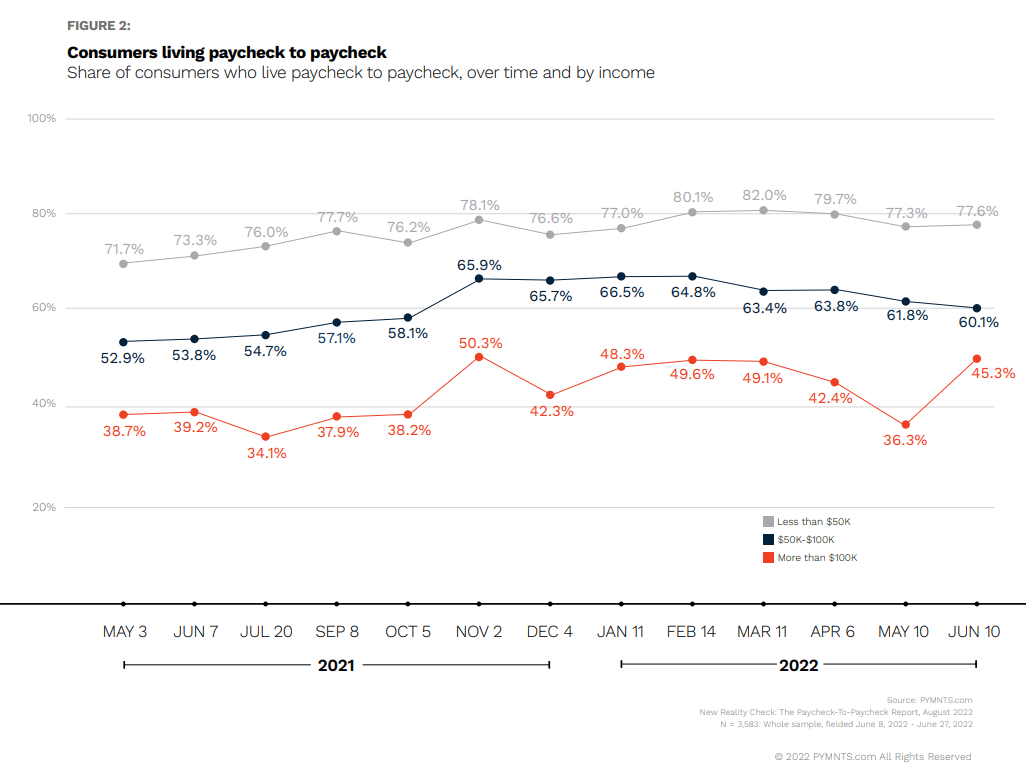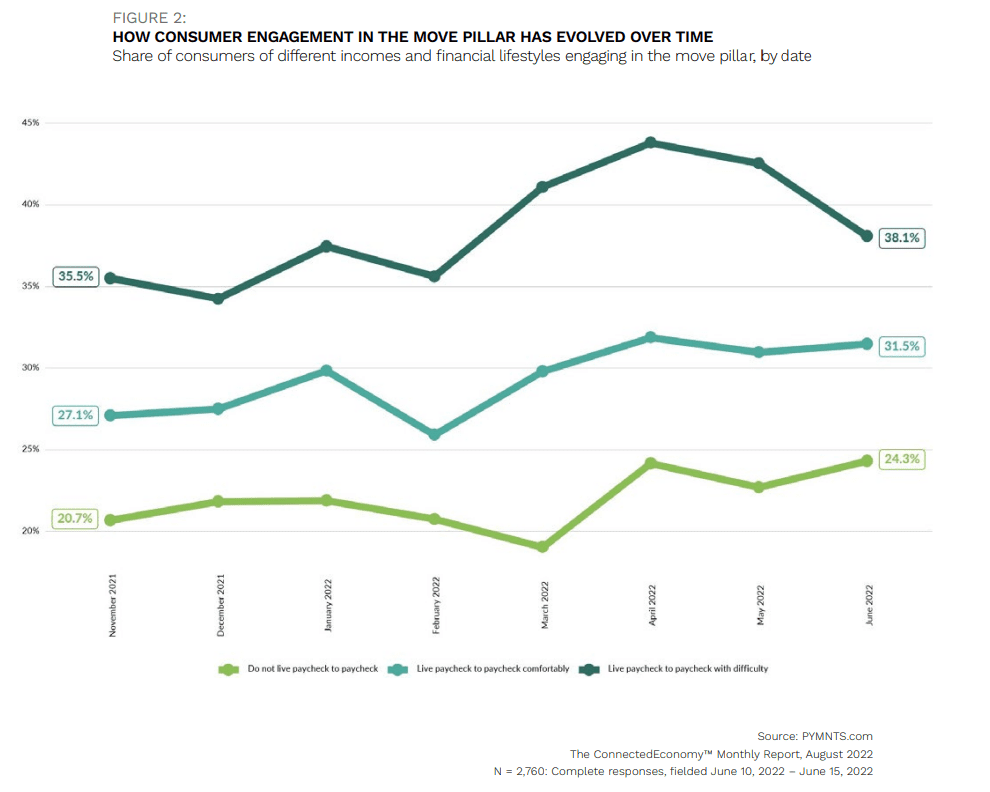Saturday Data Dive: Even the Rich Are Now Trying to Save Time and Money

Throughout the pandemic, we’ve all collectively acquired a whole new set of digital doodads and pastimes, but as that episode gives way to the jarring inflationary comedown, consumers in all age and income brackets are now reprioritizing how they spend, shop and relax — even rich individuals who have, until now, been able to maintain their status quo.
However, even the highest-earning Americans are finding themselves no longer insulated from the impacts of inflation in 2022, making the need to save money and time more urgent.
This change, or spread, is evident in reams of data gathered and analyzed by PYMNTS in recent months as receding COVID-19 infection rates took a back seat to runaway inflation and people began showing changes in sentiment and spending that reflected the new austerity.
In this inaugural edition of the Saturday Data Dive, we call out a string of revealing stats and findings from PYMNTS’ latest studies and interviews which collectively show how folks across the earnings spectrum are handling financial pressure.
More High Earners Go Paycheck to Paycheck
Not that long ago even a low six-figure salary shielded those earners from economic shocks to a considerable extent, but that edge is vanishing fast.
According to New Reality Check: The Paycheck-To-Paycheck Report: The Consumer Savings Edition, the share of high-income consumers living paycheck to paycheck increased by nine percentage points in June. Our latest survey found that the share of consumers earning over $100,000 a year and living paycheck to paycheck jumped to 45% in June from 36% in May.

Read more: New Reality Check: The Paycheck-To-Paycheck Report: The Consumer Savings Edition
The Growth of BNPL
Another measure of how more affluent Americans are feeling about their finances comes in their increasing use of buy now, pay later (BNPL) installment credit.
Not historically associated with high earners who have savings and revolving credit needed to make whatever purchase they might want, this group is using BNPL more as it comes to cover higher-priced luxury items that the affluent still want, just on more affordable terms.
The July/August Buy Now, Pay Later Tracker®, a PYMNTS and Splitit collaboration, notes that “older, wealthier consumers are quickly adopting BNPL as a means of simplifying financing for larger, big-ticket items and reducing the impact on their credit scores.”
Merchants like it for different reasons. As the Tracker states, “BNPL offers high-end retailers the same benefits as it does other sectors: It leads to larger transactions and increased customer conversion. Research has shown that 64% of BNPL users are more likely to purchase if BNPL is available, for example, and merchants that advertised the ability to split purchases into smaller installments saw a 56% increase in average order volume.”
Get Your Copy: The Buy Now, Pay Later Tracker®
Pinched Paychecks Mute Mobility
Decisions, decisions. Consumers across the board are trading down or otherwise seeking ways to conserve right now and the “Move” pillar of the Connected Economy is feeling it too.
In PYMNTS’ August ConnectedEconomy™ Monthly Report: Paycheck-to-Paycheck Consumers Digitally Disengage, data shows that depressed ride-hailing activity is rebounding for high earners but still not to pre-pandemic levels. Here again, strong earners are not immune.
Per the study, “the use of [ride-hailing] apps has plateaued among those not living paycheck to paycheck and those living paycheck to paycheck but not struggling to pay their bills. This data once again seems to suggest that money may be a factor in many financially distressed consumers’ decisions to cut back on digital travel and commuting apps.”

Read more: The ConnectedEconomy™ Monthly Report: Paycheck-To-Paycheck Consumers Digitally Disengage
The Value of Time Saved
It’s not all about the Benjamins when it comes to saving. Time is precious — a fact we feel acutely when standing in lines or stepping through endless eCommerce checkout experiences.
That’s making the buy button a more popular feature, as we find in the PYMNTS study 2022 Buy Button Report: Accelerating Checkout Optimization. This survey of over 800 merchants found that buy buttons save consumers 148 million hours each year during online checkout.
With buy button online checkout averaging a blistering 68 seconds, it’s somewhat surprising that smaller eCommerce sites offer it more than their larger competitors. “Data reveals that small merchants in particular are embracing buy button technology. In Q2 2022, PYMNTS found that 87% of small eTailers — defined as those generating less than $100 million in annual sales — offer at least one buy button at checkout. By contrast, 73% of large merchants — those generating $1.5 billion or more per year — support buy buttons,” the study states.
Download the Report: 2022 Buy Button Report: Accelerating Checkout Optimization
Bring On the Smart Carts
For a physical manifestation of the savings mindset, look no further than the smart cart trend in brick-and-mortar retailers. It’s another checkout simplification technology to streamline shopping expeditions, taking the worst bits — can’t find an item and lines — out of the equation.
Speaking with PYMNTS’ Karen Webster, Caper CEO and Instacart Vice President Lindon Gao described how the company’s Caper Cart uses artificial intelligence (AI), computer vision technology and payments capabilities built into carts to build the perfect grocery store visit.
Caper Cart is being added to the Instacart Platform technology suite, Gao said, which combines for a very different kind of grocery experience. “We could connect Instacart’s eCommerce enablement platform to Instacart’s in-store enablement platform and channel these together such that customers could place pickup orders online, and eventually staff could use a Caper Cart to fill these orders and deliver directly to customers,” he said.
It’s good news for stores and shoppers, he added, saying “By simplifying checkout for customers, now retailers have the capability to take their staff who is usually standing behind a cash register [and help shoppers]. Now they can walk the floor and assist customers inside the store, enriching that experience. I think ultimately this is going to yield a much higher benefit for the retailers’ top line versus just realizing labor efficiency.”
Read more: Smart Carts With Embedded Payments Put Consumers in Control of Checkout
